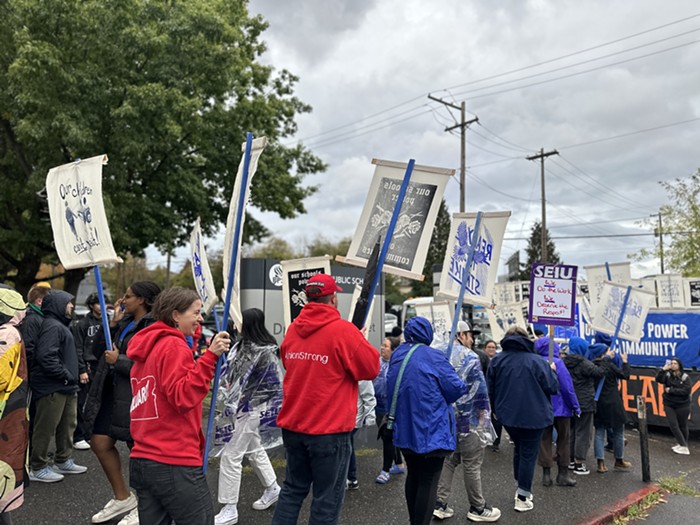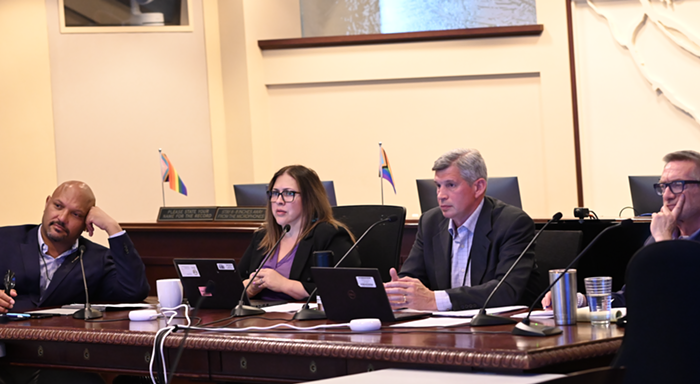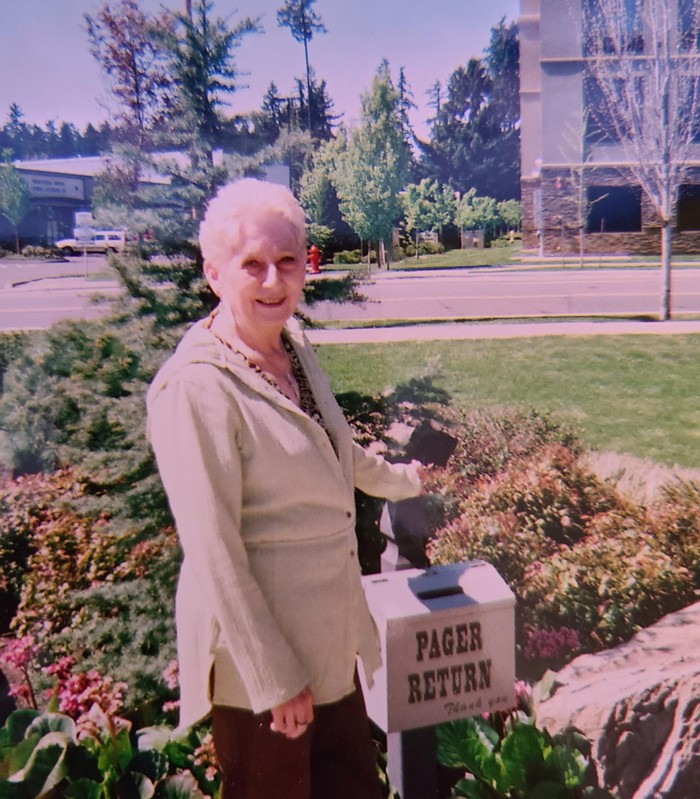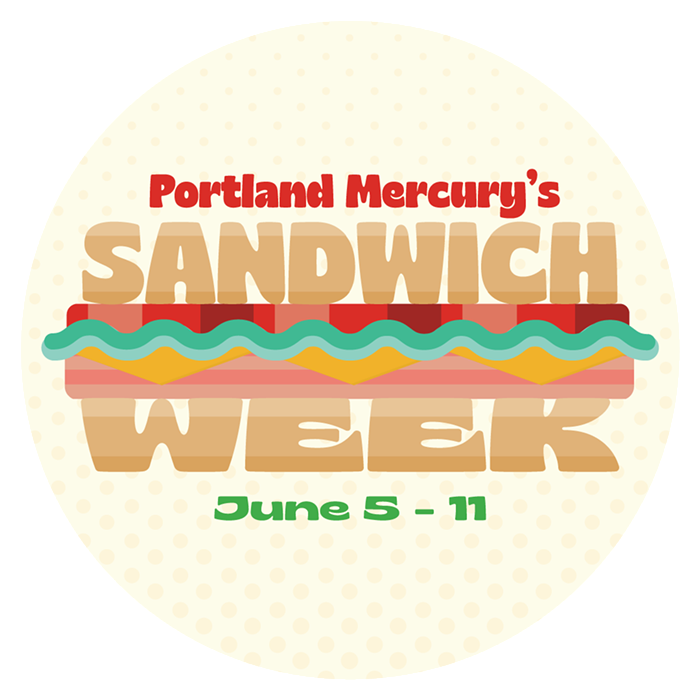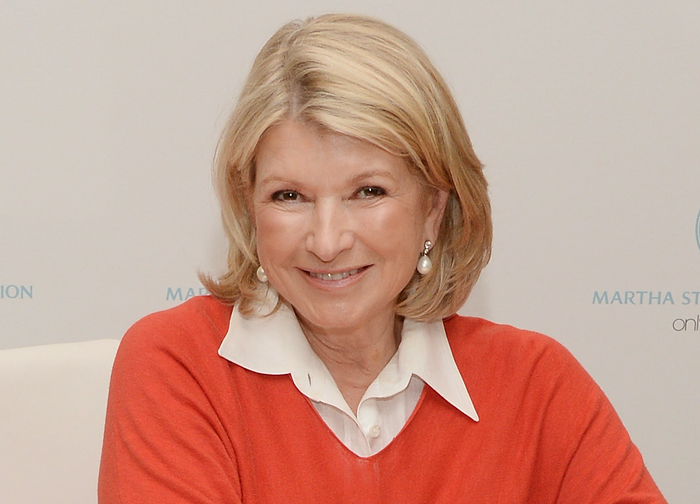
To the many arguments that have been heaved at the $450 million proposal to widen I-5 in the Rose Quarter add one more: It could imperil schoolchildren.
That's the case that was made by Portland Public Schools board member Paul Anthony this afternoon, as Portland City Council continued the interminable process of creating a new plan for growing the Central City over coming decades.
Anthony represents PPS District 2, which contains Harriet Tubman school, a currently shuttered building that PPS plans to reopen as a middle school in August. And Tubman overlooks I-5, smack dab in the zone where the Oregon Department of Transportation hopes to add a lane to the interstate in each direction.

While Anthony made clear he was speaking only for himself, he could hardly have been more scathing in his condemnation of the project—at least as he now understands it.
"In my view, ODOT and the city are putting Portland Public Schools and its board in a nearly impossible situation," Anthony told the council. That's because, even as PPS mulls spending millions to get Tubman in shape before next school year, the school board has no idea how a massive freeway widening project would affect the site.
"We do not know if the widening of I-5 will even happen," Anthony said in his statement. "We do not know if children will be able to occupy Tubman safely during construction, if ODOT can confine construction to times when Tubman is not in use, or if the Tubman building and site will even be viable after construction."
Anthony also raised concerns that "lids" that ODOT has proposed to lay over sections of I-5—lauded by city officials as ways to knit the fractured neighborhood together—could actually concentrate car emissions and push them toward the school, risking the health of students. The website Cascadia Times previously reported that a planned wall to limit exposure to pollutants at the school could be jeopardized by the widening proposal.
"The current ask before the council is for a delay to study whether the proposed widening would actually relieve area congestion," Anthony concluded. "This seems like a very reasonable request and I ask your support for it."
Mayor Ted Wheeler pledged to "orchestrate a meeting" between ODOT, city, and schools officials to hash the matter out.

Anthony's skepticism about the widening project is notable. While a coalition opposing the freeway expansion has attracted support of active transportation groups, environmental organizations, neighborhood associations, and others, local elected officials have been virtually lockstep in their support. The school board member's call for proof the highway widening will relieve area congestion is also notable—largely because even the projects biggest boosters concede it won't.
The project is conceived as a fix to one of I-5's thorniest bottlenecks. By adding a lane in each direction, ODOT believes it can cut down on fender benders that have plagued the stretch of road, potentially shaving minutes off of average commute times. Detractors point to a wealth of studies that show such projects don't decrease congestion in the long run.
As we reported last year, Portland City Council's influence over the I-5 project is unclear. The council could pull the project from the Transportation System Plan it's currently updating, potentially snarling it in the process, but ODOT has secured state funding for the highway widening, and controls the freeway.
